Hi,
I’m planning on building a 11×15 pergola on a slab in my backyard. How would I fasten the posts to the slab? Also, I having the slab extended by about 9′. The front posts of the pergola will be about 2ft short of the join. Should I increase the depth of the pergola so the post fall on the join line and have the concrete guy leave 2 holes in the new concrete to accommodate the posts?
All help appreciated,
Mike
Discussion Forum
Discussion Forum
Up Next
Video Shorts
Featured Story
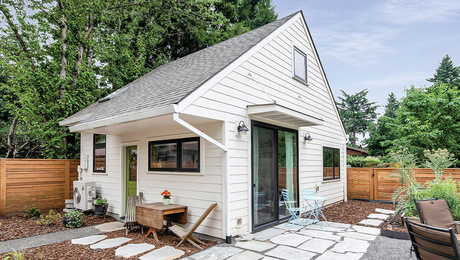
Key proposals for the next edition of the International Residential Code tackle room sizes, stair specs, emergency egress, and deck guards, among other requirements.
Highlights
"I have learned so much thanks to the searchable articles on the FHB website. I can confidently say that I expect to be a life-long subscriber." - M.K.
Fine Homebuilding Magazine
- Home Group
- Antique Trader
- Arts & Crafts Homes
- Bank Note Reporter
- Cabin Life
- Cuisine at Home
- Fine Gardening
- Fine Woodworking
- Green Building Advisor
- Garden Gate
- Horticulture
- Keep Craft Alive
- Log Home Living
- Military Trader/Vehicles
- Numismatic News
- Numismaster
- Old Cars Weekly
- Old House Journal
- Period Homes
- Popular Woodworking
- Script
- ShopNotes
- Sports Collectors Digest
- Threads
- Timber Home Living
- Traditional Building
- Woodsmith
- World Coin News
- Writer's Digest

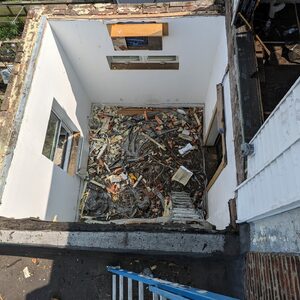
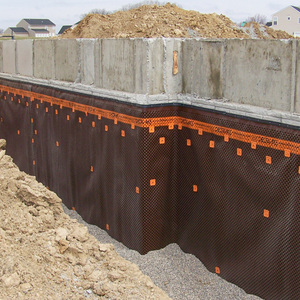
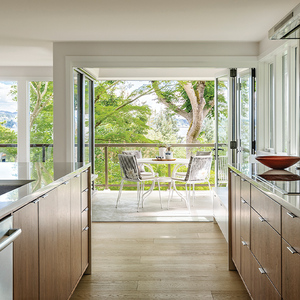





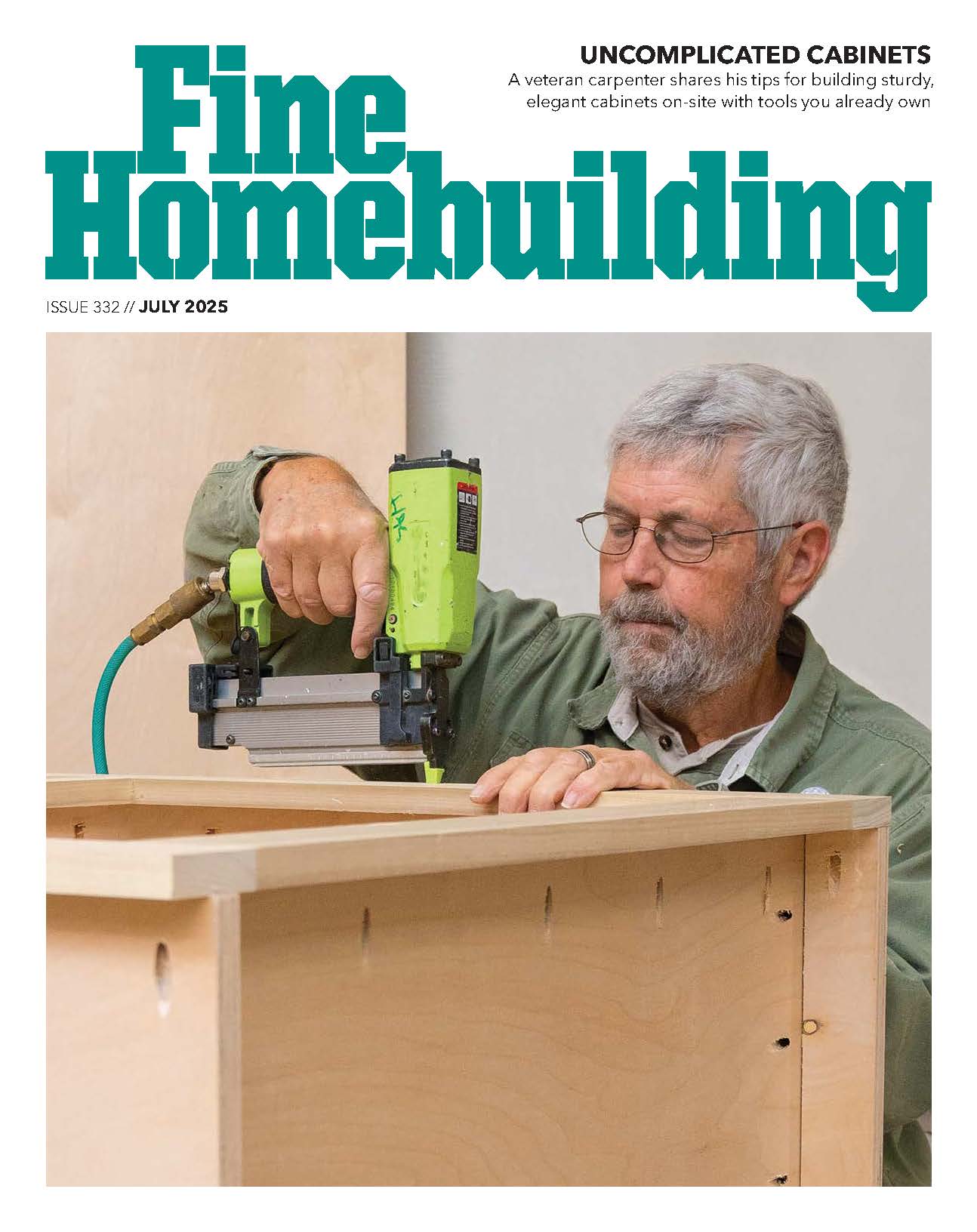
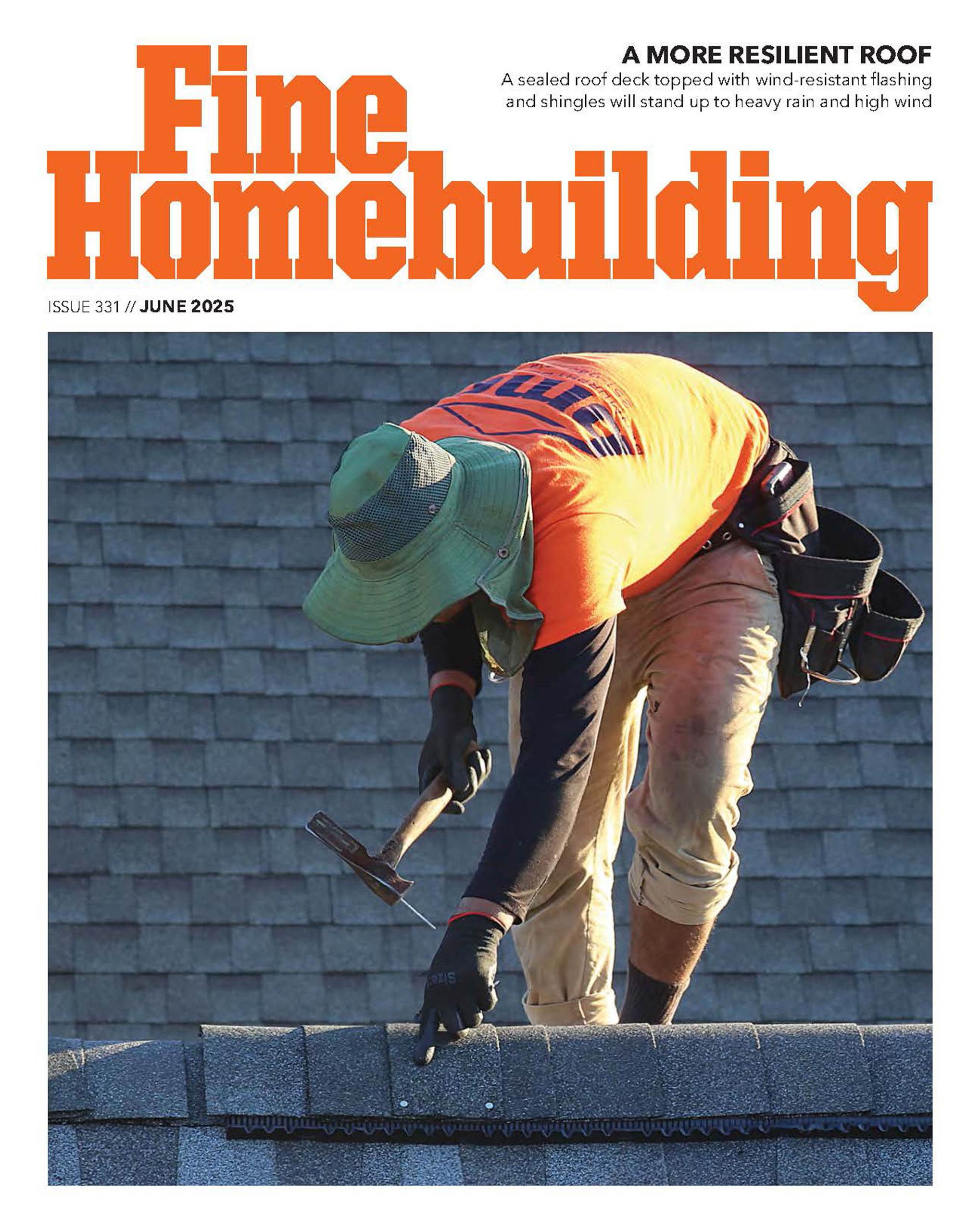







Replies
simpson strongtie makes several post-to-slab connectors that would easily be fitted on an old slab. You will need a good hammer drill with the right sized bit, as well as epoxy for the actual structural connection. I've worked on jobs where we used simple right angle connectors with tapcons. I didn't like it so much, but it wasn't my call and we did use 4x6 posts with rails. Its been almost half a year and they haven't moved an inch.
For the new slab, you could just use the same connectors, but inject the bolts into the fresh concrete after it starts to set up. Go to simpson's website to find many of the connectors of which I speak.
Thank you, I'm not sure if it's pertinent but I was considering casing them with fibre glass columns.
Mike
With the right connector, the fiberglass should slide right over the posts with no interferance.
http://forums.taunton.com/tp-breaktime/messages?msg=105500.1
My favorite way -
Forrest
Very nice.
Mike
Forrest,
This has got deeper than I thought but it's beginning to make sense. How would I apply your method if I want to have a pedestal and column set up instead of a full column?
Thanks again,
Mike
It depends on how you design and build the pergola. How do you want the posts to resist the side forces?
One way is to make the posts resist the side froces at the slab connection.
But you could also put braces in the top structure of the pergola.
Braces in the top is much easier.
Thanks, could you elaborate a little more on that?
Mike
No problem. It hard for me to use the right words to describe this. But I will give it a go. I'm not an engineer or designer. I understand it but I'm not used to describing it.
There are basically two forces you need to resist in the structure.
One is that the posts are going to want to sink due to the load on them. The post would sit on concrete and be connected so they stay in place. The connection also resists lift in high winds. But basically the connection just keeps the bottom of the posts connected to the concrete.
The other force on the structure is side force from winds or just the inevitable lean.
This force has a lot of leverage in that the posts are so long. The traditional pergola design doesn't have any bracing in the structure to resist this side load. The horizontal beams are just stacked and fastened on top of each other with no diagonal bracing.
If you look at McDesign's connections ( top notch work) they are so complicated and detailed because it is resisting all that side force right where they connect to the concrete. McDesign rightly calls this a "cyclic bending moment ". That is because it is free standing and there will be little to no bracing in the structure itself.
What you can do if you want is to have some bracing up in the top to share this.
Also, a lot of pergolas are attached to something beside them. You take a few of the horizontal beams at the top out to a structure beside the pergola. A lot of pergolas are right outside another structure so I've seen it a fair amount.
Personally, I would never put any diagonal bracing in a pergola. It just looks wrong and goes against the traditional design. But you will see it some times.
I've also seen 8" x 8" cedar posts sunk in concrete to resist side loads. It was in a dry climate but I wouldn't do it. It was also in tornado country. I can see those posts breaking off at the point they enter the concrete in a high wind.
I don't know if this helped. If your pergola is going to be free standing or not.
Edited 11/28/2008 11:34 am ET by popawheelie
Edited 11/28/2008 6:23 pm ET by popawheelie
Thanks, that is a great job describing the problem. I'm probably going to be using 4x4 or bigger then covering with the fiberglass columns so the upper bracing would not work, correct? It's going to be next to a pool cage, I don't think I need a permit if it's not connected to any other structure, stand alone. Can I bracket it to the pool cage? would that give any additional strength?
Thanks for your help,
Mike
I can't say with out seeing it. Keep in mind that McDesign's structure is built to last a longgg time. Many of these structures are built like decks. They are built to last a "while".
Here's an example of a structure with to much side load applied at the top.
http://www.youtube.com/watch?v=R8g5KJ6CKkw
Hi
Can u set your posts in cocrete . That should take care of any side movement.
I also noticed that u did not say anything about footings ?
Just a suggestion..
Setting them in concrete is one way. But in order to resist the bending moment where the 4x4s come out of the concrete there has to be enough of them for the structure. And the footings and 4x4s need to be deep enough.
This will work, but if the climate is wet they will rot out eventually. I don't like putting lumber in concrete in the ground.
McDesign's work will last a longgg time. His work is on a more permanent level.
A lot of people consider decks and outside structures as temporary. That's fine. They last for a while and you replace them.
I like using the Simpson feet for that application. The foot bolts to the concrete and nails to the post. I like them cause they keep the wood from coming in contact with the cement.
Family.....They're always there when they need you.
Personally, assuming the lateral support is not based on the post bases, I like the simpson bases that have a threaded rod that can be epoxied after adjustment. It allows the hole to be drilled after the pour and they support 2,500 lbs or so.
View Image
If the post bases are to be a source of "sheer" support, then they need, at a minimum, to be one of the models that has heavy straps coming up the side of the posts and even then it's not as secure as setting steel posts into concrete and the post can still rotate relatively easily in one direction.
Beer was created so carpenters wouldn't rule the world.
Thanks all. I think I have the post support down but on a slightly different tack, given the pergola dimensions, what size posts should I be using, for support, not looks because I will be using the columns.I'm trying to get away with just four posts if possible
Thanks again,
mike
The dead loads from the structure are easily handled with 4x4's, but the issue of lateral forces is the big unsolved issue here. One way to gain strength in the lateral direction is to use larger posts and use a very rigid connection to the slab. Other than sinking the posts 3 feet in the ground, this is hard to do reliably.Forrest's solution is really good. Could you do that?Bill
I've found that the simpson ties rust all to hell. In response to your post I've found a good way to resist the side loads is to place a piece of 1/2" x 8" rebar(epoxy coated is preferrable) into the conc. either while it's curing or after the fact w/ epoxy and have it protrude into an over sized hole in the bottom of the post withe some const. adhesive. It makes for an anchorless appearance.
Yes, I do the same thing, and once gave a lengthy description that is archived here on Breaktime. When strength is paramount, I use four rods entering the post near the corners, and angled towards the center of the wood as they go in the slanted holes. When corrosion is a big risk, I use stainless all-thread, but epoxy-coated rebar is very good for much less money.Bill
Here's another failure from lateral loading - this from the wind off the Chesapeake Bay -
View Image
From this thread a few years ago -
http://forums.taunton.com/tp-breaktime/messages?msg=81690.1
Forrest - again
I recall u said u where using Fiber glass Columns Sild over top of the 4x4's
I would attach the columns to the slab with Some sort of "L" bracket .
Remember the base will cover any attachment.
The Fiber glass columns can support the load of the Pergola themselves
Good luck..
Thanks,
Yes,that was my original plan but then I was made aware of the "lateral force" issue the wasn't being addressed in the original plan. I was thinking by using the idea in the pic that the lateral force issue would be taken care of.
Mike
keep in mind some of these posts are confusing lateral shear forces with moment (rotational) forces...
pretty much all of the simpson post bases resist lateral shear forces. pretty much none of them are rated for moment forces, as others have pointed out.
another way to deal with the moment forces is with a "couple" at the top. two bolts into cross members in both directions will resolve the moment at the top, just as the diagonal bracing others have suggested would.
then all you have to worry about at the bottom is shear (and vertical, of course, which we're assuming (correctly or not) your slab can handle). true shear forces aren't generally causes of failure.
when i use this method, i use 6x6 posts at the corners, and run them as high as the upper cross members, which become structural. i double up the 'beams' (2x10 or so)and 'rafters' (min. 2x6), both for strength and aesthetics (to box in and hide the post) and use min. 1/2" carriage bolts. you can either continue the pattern of pairs of 'rafters' or go to single spaced for the main 'ceiling' of the pergola.
k
Boy, Just when I thought I was getting a handle on it. You don't happen have any illustrations of your explanation do you?
Thanks,
Mike
sorry, i'm barely computer literate, no cad programs, not even a digital camera.
it might not work with the aesthetic you're looking for anyway, but I'll see if i can describe what i've done in the past.
in the photos posted in this thread (by McDesign, i think) there is a beam (for lack of a better word) that sits directly on top of the columns, running the long side of the rectangle. then there are joists (that's what i'm calling them, now, anyway) that run 90 degrees to those beams, sitting on top of the beams. the "joists" are like the ceiling of the pergola.
(there are probably real terms for the components of a pergola, but i don't know what they are. if anyone out there does, chime in.)
in his case, the beams and joists only support themselves, they don't add structural integrity to the columns. he resolved his "moment", or rotational forces, at the bases of the columns. (in the bargain, he also solved the lesser shear forces with strength to spare.)
what i have done in the past is to bolt the "beams" to the corner posts rather than setting the beams on top of the posts. i use two boards, one on either side of the post and bolt them through with two 1/2" or 5/8" carriage bolts. so the columns can't rack over in line with those beams, because that connection is locked in at a right angle.
one bolt wouldn't stop rotation, but two bolts becomes a "couple" in physics lingo, which resists rotation. the beam can't rotate relative to the post unless the bolts fail or the wood around the bolts fails.
i then do the same thing with the "joists" at the corner posts, bolting them through. those bolted "joists" are sitting on top of the "beams" just like all the other joists, although they are being supported by the bolts. so now we have a moment resisting couple in the short direction of the rectangle as well.
at that point, you've got a rectangular frame that acts a lot like a table. the table could still sink if your slab can't handle the vertical load, and if the wind shoves your table sideways it could move sideways as a unit, so you've got to catch the table leg at the base to keep it from sliding along (shear). but it won't rack over unless the bolt/member connection fails.
(there's the global moment force whereby the whole table could flip over, but that can be resolved with vertical restraint at the table leg, like a hold-down does for a shear wall.) any of the simpson bases resists that. in fact, just forget about global moment for now. the main thing is that your post/beam and post/joist frames are locked in at 90 degrees in both directions, and won't rack over.
i have a vague recollection of a craftsman style pergola in a back issue of FHB that resolved the moment forces in this way, but i can't find that issue. i'll do a little more searching- one picture would make this so much clearer. sorry for muddying the waters.
k
KFC,
Appreciate your time and help. I have the issue you're on about and I'll reference that. After reading all the other replies I think what I'll do is post dig a couple of holes before the concrete get poured, (I'm extending the existing slab) with rebar to act as footings for the front columns. The rear columns are going to sit on the old slab. I'm hoping that building them with pedestal base in addition to the extra support at the new front footings should give it enough strength. Anybody please chime in with comments.
Mike
if you resolve the rotational force at two of the posts, that will pretty much stabilize the structure, although there's a question about wobble in the frame at the two on the existing slab, but probably not enough to worry about.
sounds like a good real world solution, unless you're in an earthquake or hurricane, in which case all bets are off anyway...
i think the craftsman pergola may have been done with through tenons, not bolts, but had the same results. they also used corbels iirc, which kind of do the same thing diagonals would. i still haven't found the mag. issue, but i found it on the website. i couldn't open it for some reason, so all i could see was the cover photo... hopefully they discuss this very problem. i'm almost certain they didn't set the posts in concrete.
have fun!
k
Here is a real simple solution.
drill a 1/2" hole at each location. set a piece of 1/2" rebar into each hole. center drill a 1/2" hole in the bottom of each post and set them over the rebar. Nothing to catch water and facilitate rot.
I use this system for decks to keep lumber out of the ground.
I've attached a detail drawing for you to see. Ti is how I do this for decks where I am pouring a footing but it should give you the idea.
btw, should you be using a footing here too? possible that you may eventually break your slab at points of weight stress.
on edit: Forrest raises a good point. With decks I can cross brace but with your pergola, assuming it is free standing, you'll need lateral support. Perhaps using my system with 2" +/- steel pipe instead of rods will give you good support. bore as deep as you can into the post for this.
View Image
I refuse to accept that there are limitations to what we can accomplish. Pete Draganic
Take life as a test and shoot for a better score each day. Matt Garcia
Edited 11/29/2008 8:26 am ET by PeteDraganic
Thank you,
The slab is already there so I think the footing option is out. So I have 3 1/2 - 4" concrete to fasten to. I'm thinking maybe the type of setup in the pic would solve the problem. Use the simpson ties to fasten to the slab then surround it with a block pedestal, instead of the wall, for the column. Would that work?
Mike
So I have 3 1/2 - 4" concrete to fasten to. I'm thinking maybe the type of setup in the pic would solve the problem.
3.5 - 4" of concrete will hold itself up, but not much more.
It's also not enough to hold up the knee wall shown in the photo (although that is an elegant way to gain footing depth).
The lateral loads on even an open, lightweight structure like a pergola can get to some big numbers. Numbers large enough to snap 3-4" concrete by putting in its weakest condition, tension. "Patio" or "sidewalk" concrete is not always the strongest, and often has no reinforcement in it at all (meaning it has almost no tensile strength at all).Occupational hazard of my occupation not being around (sorry Bubba)
Thanks,
So is this a no go?
Mike
So is this a no go?
Well, I only "play" engineer on the internet <wry smile>, so, in absolute terms, "no" is right out.
"Probably not" I'd be middling sure about.
Since you are in St. Pete, frost dept is not an issue; wind loads are, though.
But, first, we have to hold the arbor up as is. Let's say the whole thing is 800#. Four posts means each post carries 200#--not so very much. Except, if we applu 200# through a 5/8" diameter rod/bolt, that's about 1/3 square inch of area. So, there's a bit of "oomph" on that rod, and in only 3" of bearing depth. It's also going to be in the last 4-6" of the slab, which offers a strong bending moment, right where the reinforcement is least (and the subgrade is most likely to be compromised, too).
Or, a person could just saw cut the space where a footing ought go, and dig down 6-12" inches 12-18" wide and have really good support.
Support is needful, that short (if elegant) knee wall in hte photo could run around 200# the cubic foot, too. 24 x 24 x 144 is 48 cf, or near to a half ton sitting on only 24sf.
Makes using cultured stone on CBU on galvanized studs a very attractive answer, it can. (Other than not holding up the pergola columns--but a 12x12x12 footing cut into the slab might cure a lot of that.
A few hundred spent on a locally-experienced PE would be even better, though.Occupational hazard of my occupation not being around (sorry Bubba)
Thank you,
All this really does make sense but I must admit, I am getting a bit confused. Most of it I didn't even know about before being enlightened by everybody that's given input. I hope this doesn't sound stupid but say I cut the holes in the concrete, dig down, pour the footing. Is to attach the simpson tie to or is it to set rebar in. If it's rebar where do I go from there?
Thanks again for your insight.
Mike
What's a PE.... Pergola Engineer?
Edited 12/1/2008 10:19 pm ET by MBaybut
I assumed if you were digging footings that you'd be aiming for a connection at the base that would resolve the torque/rotation/moment issue, like McDesign's. Or that you'd set beefy posts 3 feet or so in a concrete collar, which would have also resolve those issues, until the post rotted at the ground level (10-20 yrs. for PT or redwood/cedar).
If you're using simpson brackets, which would handle vertical and shear (lateral, non-rotational) forces, then you probably don't need a big footing, unless your slab is weak or the subsoil is real spongy. you would need to address the moment force at the top of the pergola if you used simpson brackets, though, b/c none of the simpson brackets that I know of are rated for rotational/torque/moment loads.
any help?
k
Edited 12/1/2008 11:03 pm ET by KFC
Thank you,
Almost there now. I have the concrete coming in the morning. I have the footings and rebar in place for the front columns. As regard the rear coloumns on the existing slab, if I drill for, and install the rebar and then put 12x12x4 concrete collar, then lay a couple of courses of CB to form a square column with the rebar coming through them. Finally filling the cavity with concrete. Would that fly? Like an upside down footer.????
Mike
so the post is set into this above ground "footer"?
if i'm following you correctly, it might help, yeah, in the way a concrete base helps a patio umbrella. as long as the above ground collar/block/knee wall or whatever you're describing was really well tied together. it'd be a shame if a wind blew on the pergola and the post became a lever popping your base into pieces. then you'd have a leaning post and a busted wall.
if i was cutting into the existing slab, i'd dig some deep holes and set the posts in concrete down in those (if i really didn't want to address the torque issues up at the top of the structure). i'd be concerned about rot eventually, but not for some time.
I also must admit I've been popping in and out of this thread a little haphazardly, so I hope I'm staying current with your decision path- i may be answering questions about rotational forces when you're asking about shear, for all i know.
k
I hope this doesn't sound stupid
It's only stupid after you do it the wrong way without asking first <g>
but say I cut the holes in the concrete, dig down, pour the footing. Is to attach the simpson tie to or is it to set rebar in. If it's rebar where do I go from there?
The point of a footing is to provide "the pyramid' of support" structures need. The reference there is to how soil takes loads and distributes them in aproximately 45 degree angles outward from the loading. In section, that looks a bit like a pyramid.
The nice people at Simpson base their calculations on a certain amount of how deeply the anchors can be embedded--they often do not address how that much material is to exist or cause to be existed. (And such things get complicated fast, one of the first teaching examples in Structures classes is how the 1/4" of a 110# waif exerts more force than the 30s.i. foor of a 1500# elephant in psi.
Given that we are supposing about a 12 x 12 x 12 concrete footing for shade-tree guestimation, that footing would probably suffice to have one #4 bent into an 8" square and centered in the footing.
Now, whether these footings have an anchor bolt embedded before pouring, or set into palce afterward tends to be to the preference of the person placing the material. I happen to like finishing hte concrete without embeds, to render a smoother surface without slopes up to the embedded bolt. (I'd rather drill nad use an expanding bolt, or epoxy one in place than cope with humped up concrete about the embed--but, that's my preference; others' differ).
And, to my preference, I really like galvanized framing and cultured stone where I do not know the engineering of existing slabs. But, that's from retrofitting sealed-combustion fireplaces, too. Framing a 1 ton addition is much easier than 15 ton ones. So, that is how I'd spec the kneewall/seat from the photo you have. This would neatly cover the joints in cutting in the footings for the pergola columns, too.
What's a PE.... Pergola Engineer?
PE = (licensed) Professiona Engineer. Tyoically, the individual States permit a person to append "PE" or "P.E." after their names once they meet or exceed that State's requirements for being a licensed engineer.Occupational hazard of my occupation not being around (sorry Bubba)
Thank you,
Could you please expand on how to construct the galvanized frame for the cultered stone? Is that the same as steel studs in HD and Lowes?
Mike
Is that the same as steel studs in HD and Lowes?
Probably, I've never shopped for galvanized steel studs in a big box store.
But, yes, the material is the same no matter the source. Shoot channel stock down. Cut a bunch of studs with snips (I use all three kinds, but I use neutral and right most). You attach the studs to the channel using framing points--a self-tapping, self-drilling screw. Another channel makes up the "top plate" of the assembly.
The backer board will give a great deal of diaphram strength to the assembly. This gets screwed to the studwork. I'd probably go with a 22ga stud to help carry the stone cap better.
Don't forget to allow about 2 1/2" of thickness for the cultured stone, and to size the stone caps first (don't ask me how I know <g>).Occupational hazard of my occupation not being around (sorry Bubba)